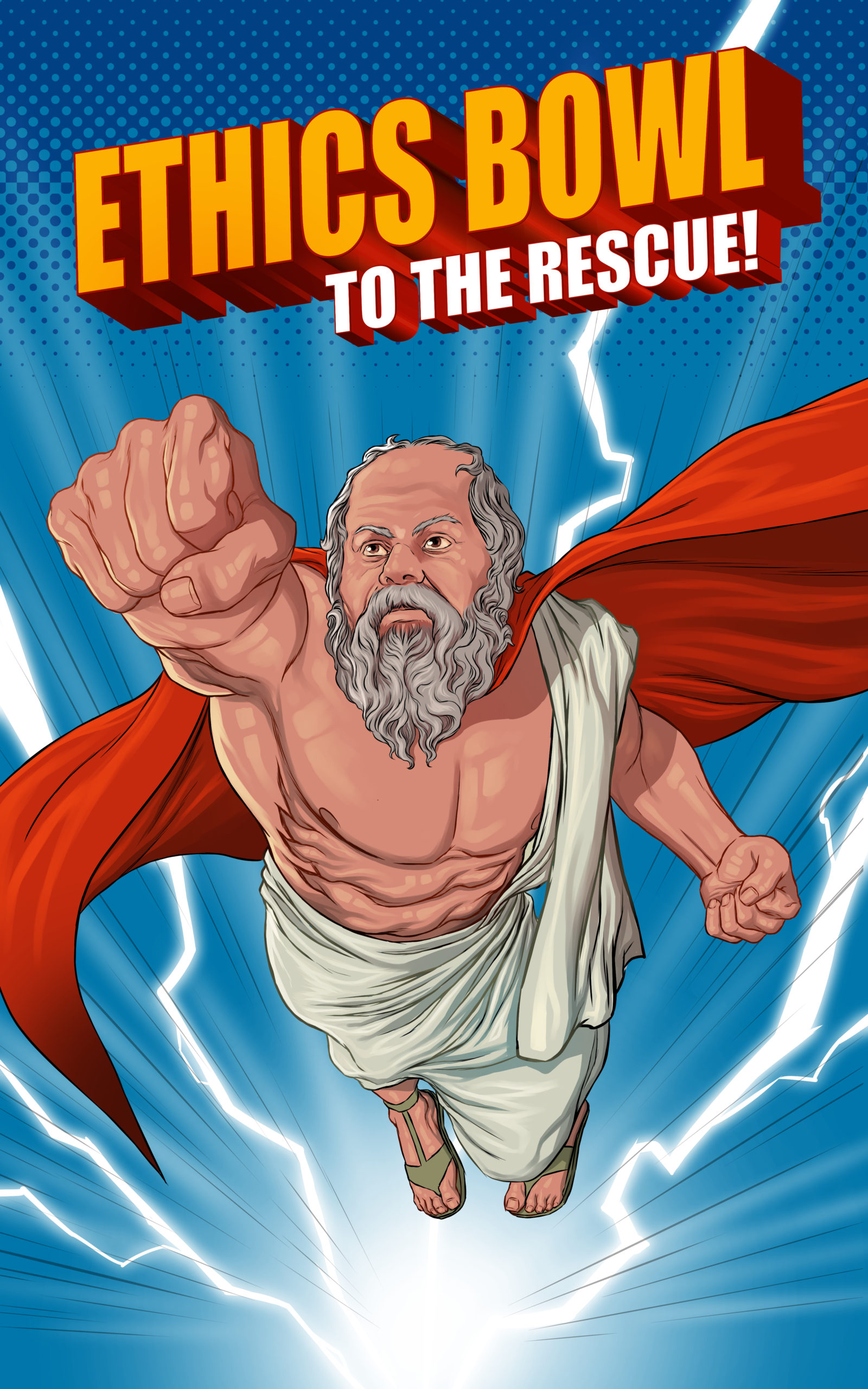This past Sunday, a small group of Ethics Bowl organizers, coaches and enthusiasts met for an informal, unofficial discussion on how ChatGPT and other generative AI tools might be used for Ethics Bowl. The purpose wasn’t to settle much of anything, but to inspire further discussion at the upcoming NHSEB regionals and nationals, as well as IEB nationals.
Why? Teams are surely using it. And given that Ethics Bowl participants, coaches, judges, moderators, organizers, their families and fans are among the most thoughtful people in the world, inviting them into a collective discussion on how to properly incorporate this technology seems a no-brainer. It’s an ethics question about Ethics Bowl – doesn’t get much more relevant than that. If you agree, please share this article and/or the accompanying recording, and report back any and all ideas worth sharing. Some upshots:
- How to Best Leverage AI for Ethics Bowl Prep: Think of it as a conversation partner, tutor, rough draft-generator and/or judge/opposing team simulator. Understand its limitations. Fact check. Reason check. Moral blind spot check. Bias check. It’s a strong supplement to, but not a replacement for, human wisdom and deliberation. And it performs best when guided with insightful follow-ups.
- On Worries that a Team Might Use AI to Write a Presentation Script: Using ChatGPT for Ethics Bowl prep isn’t analogous to asking it to do your homework because a) teams need to come to a consensus prior to the event (and it’s unlikely an entire team would agree to memorize and regurgitate a chatbot’s script), and b) due to EB’s live, interactive nature, any team overly reliant on an AI script would be embarrassingly exposed during commentary response and judge Q&A. Also, bowlers are a special self-selected subgroup of the population, far less likely to do anything that might constitute cheating than your average student (most of whom are also unlikely to cheat, but we educators are often paranoid about that).
- Steps Ethics Bowl Leaders Can Take: While a team might get away with memorizing an eloquent opening presentation script written for them by a chatbot (the risk is low, but one could), this can be partially mitigated by adjusting score sheets to increase the relative weighting of the commentary, commentary response and judge Q&A portions. (Rules committees, steering committees, other leaders – please give this additional thought – tweaking rubrics might help as well.)
- Steps Ethics Bowl Coaches Can Take: The broader community of Ethics Bowl coaches (including Ethics Olympiad, John Stuart Mill Cup, etc. coaches) can and should work together to test, share and recommend AI prompts and techniques that produce the highest quality outputs. They should also remind students of the virtues of democratic deliberation and the risks of intellectual laziness. Consider EthicsBowl.org one place to share such insights.
- Steps Case Committees Can Take: Since generative AI seems more effective at scripting responses on cases about real world events (with published editorials for the AI to scan), case writing committees should consider using more fictitious scenarios or putting twists on real world cases (focusing on some interpersonal moral tension within the broader context of a real world issue). This may be unnecessary, but definitely deserves additional thought.
There was more – please watch the video when you have time. But one thing I argued is that AI can serve as an equalizer, connecting all teams (both advantaged and disadvantaged) with an on-demand tutor with an unmatched knowledge base and inexhaustible stamina. Students with the time and interest can learn pretty much anything, including philosophical ethics, so long as they know how to ask good questions. Background knowledge definitely helps, and learning will be slower when the topic is new. But I’m very optimistic about AI’s potential for education.
Special thanks to Michael Andersen for the idea, the planning and co-hosting, as well as to coaches Dick Lesicko, Angela Vahsholtz-Andersen and Chris Ng (thanks also, Chris, for your notes which helped with this article), organizers Jeanine DeLay and Greg Bock for your preparation, attendance and engagement. And apologies to Gabe Kahn, who gets credit for trying to attend! Next time I’ll more closely monitor the Zoom host notifications…



